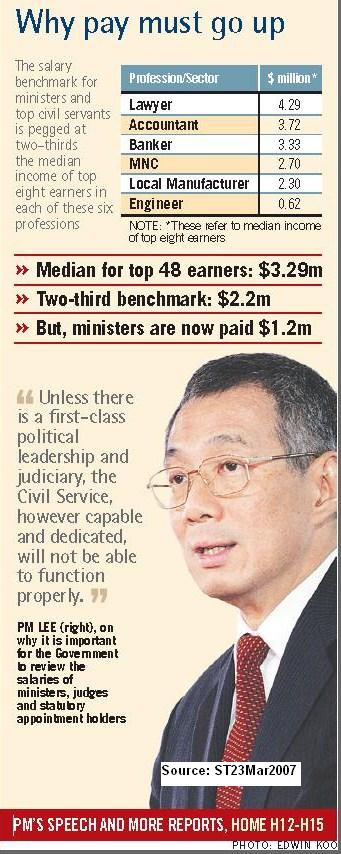PAP lightning quick to raise political salary, drags feet when helping handicapped kids...Raising political salaries circa 2007:

Today, still long appointment waiting times and lack of subsidies for handicapped kids:...
High cost of therapy a burden for familiesReview ratio of therapists to kids with special needs
Quote:
The Straits Times; Published on Oct 18, 2014
High cost of therapy a burden for families
AS A parent of a child with special needs, I am glad to see increased awareness of the issues these children face.
Special education schools provide speech and occupational therapy for their students, but the wait to see a therapist is often very long - children deemed to have "less severe" conditions have to wait for months or even a year - because of the heavy demand for such services.
Parents have no choice but to turn to external therapists. The cost of therapy, however, can range from $100 to $160 per hour.
These sessions are not luxuries; they are necessary to enable the children to function better in their daily lives.
How can low- or middle-income families afford such fees in the long run?
As it is, the fees for special education schools are already very much higher than those for mainstream schools.
I urge the Government to help those families that have children with special needs.
Hong Wai Yee (Mrs)
Copyright © 2014 Singapore Press Holdings. All rights reserved.
High cost of therapy a burden for families |
Quote:
The Straits Times; Published on Oct 22, 2014
Review ratio of therapists to kids with special needs
THE Asian Women's Welfare Association agrees with Mrs Hong Wai Yee ("High cost of therapy a burden for families"; last Saturday).
Children with special needs require therapy support in the form of both active and maintenance therapy on an ongoing basis.
Active therapy helps children learn independent living skills such as mobility, self-care and communication, while maintenance therapy focuses on maintaining the skills acquired to retain optimal functional performance.
The waiting time for physiotherapy, occupational therapy and speech therapy in voluntary welfare organisations (VWOs) is often long because of the limited number of therapists and high caseloads. Consequently, the frequency and duration of sessions are often reduced.
It is timely to review the therapist-children ratio and decrease the number of cases per therapist, to help boost the duration and frequency of the sessions.
Therapy services are in high demand in institutions serving children with special needs as well as in the private market. This adversely influences the cost of such services.
Children with special needs receive education and support not only in special education schools from the age of seven, but a good number of those below age seven are also supported in the Early Intervention Programme for Infants and Children. Also, there are a fair number of children with special needs in mainstream schools.
When the available care options are scarce and limited in these institutions, including the VWOs, parents are compelled to look for alternative sources of professional care in the private market.
With the limited pool of therapists in Singapore and with caps on the inflow of foreign talent, lateral thinking with innovative strategies is very much needed.
Another evolving trend is the growing demand for special student care centres for children with special needs. These centres provide care and enrichment services to the children, enabling their parents to go to work with peace of mind.
These centres may also address the additional therapy needs of children with special needs through holistic care with therapeutic inputs.
Tim Oei
Chief Executive Officer
Asian Women's Welfare Association
Copyright © 2014 Singapore Press Holdings. All rights reserved.
Review ratio of therapists to kids with special needs |